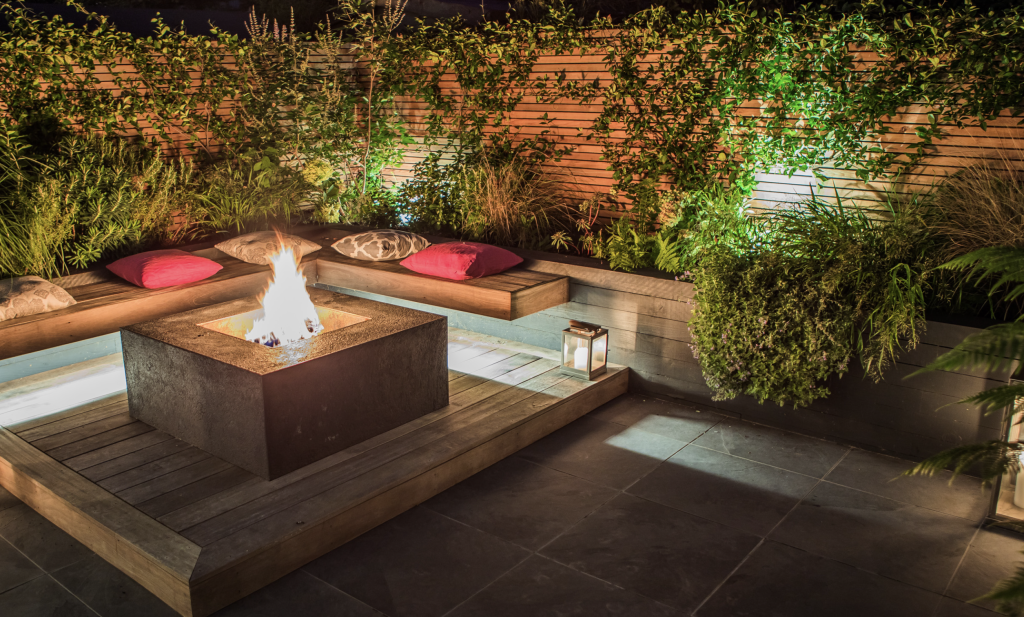You don’t have to rely on sunlight alone to illuminate the hard work, pride, and joy that went into cultivating your garden. Landscape lighting can shift the look and feel of your lush oasis, turning it into a cozy reading nook, an intimate lounge area, or a space to spotlight your property’s best features.
Once you learn the nuances of outdoor lighting design, you can illuminate your garden confidently and beautifully. With so many landscape lighting products to choose from, how do you know which creates your desired effects? A few tips are all you need to design a stunning garden plan that’s beautifully lit at noon and midnight.
Zone Different Parts of Your Garden
Contents
You know an outdoor lighting design checks all the boxes when it creates an atmosphere. By experimenting with contrast and using pockets of light to create layers, you inspire different moods throughout your garden.
For instance, color changing landscape lights shining from up lights and under-seat lighting strips can make a space feel vibrant or relaxed, depending on the color scheme you choose. You can easily schedule different colors and moods to suit your desires with a landscape lighting transformer.
When you want to enjoy a relaxing evening in your garden, program the lights to shift to warm tones at sunset. If you have a small dinner party planned one weekend, inspire an intimate vibe by scheduling the lights to shift to golden tones when everyone arrives.
Keep Flexibility in Mind
It would be great if your most beautiful blooms endured throughout the year, but seasons change. Your landscape design may change, too. Think about how you may want to adjust garden lighting if you trim flowers or shrubs, as removing a few blossoms or overgrown branches may change the lighting effect.
Even when plants look their best, you may change your mind about LED strip, path light, and well light placement. LED lights are some of the most versatile available today, and moving them around can become a fun part of your lighting plan. Leave room to improvise and play around when designing your plan. For example, when arranging lights in a line, alternate between well lights and up lights to give yourself options for light diffusion and intensity.
Keep Walking Paths and Steps Well-Lit
While path lights near plants and flowers enhance their beauty and texture, you don’t have to arrange the lights in a perfect line. Instead, position the lights so they guide visitors toward paths and steps in your garden. Not only does this arrangement look more aesthetically pleasing, but it also helps guests maintain their footing on your property.
Create a natural lighting effect by downlighting your garden’s steps and walking paths with downlights installed in nearby trees. When positioned 20 to 30 feet above the ground, the light resembles moonlight shining down from above. Prevent bothersome glares by shielding the lights, and hide the light with garden vegetation.
Bring Indoor-Style Lights Outside
If you want your garden to feel more like an interior space where you dine, read, unwind, or entertain, why not bring interior lights and fixtures outside? Use floor and table lamps and lampshades from inside your home as inspiration for making your garden look like an extension of your style.
You can also use your current garden and patio furniture to narrow your options. For instance, if you have a favorite patio sectional sofa or armchair, consider what style of floor lamp would complement it. Check that the indoor light you desire for your garden is safe for outdoor use.
No matter whether you’re putting the finishing touches on your landscape lighting plan or just getting started, these tips light up your garden’s potential.

